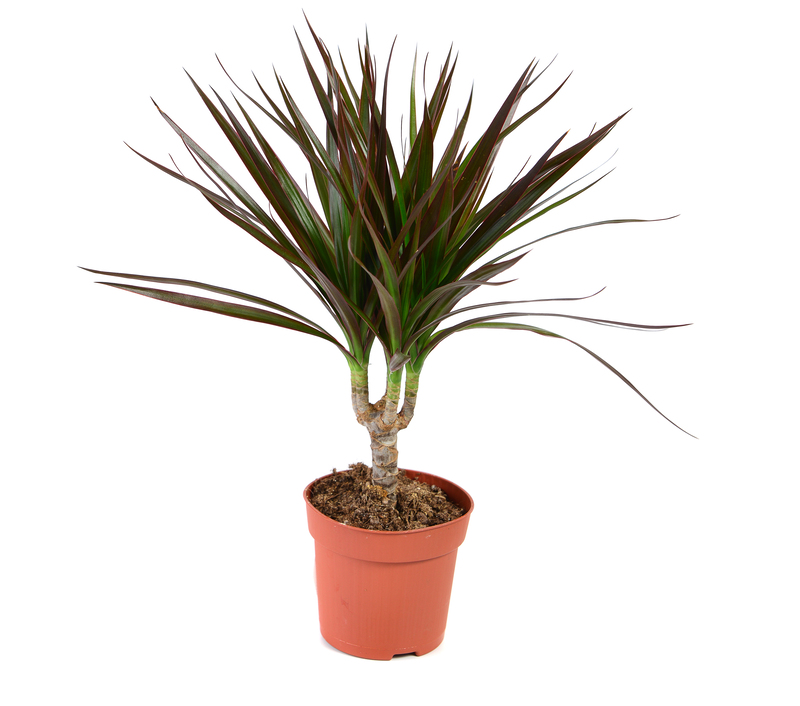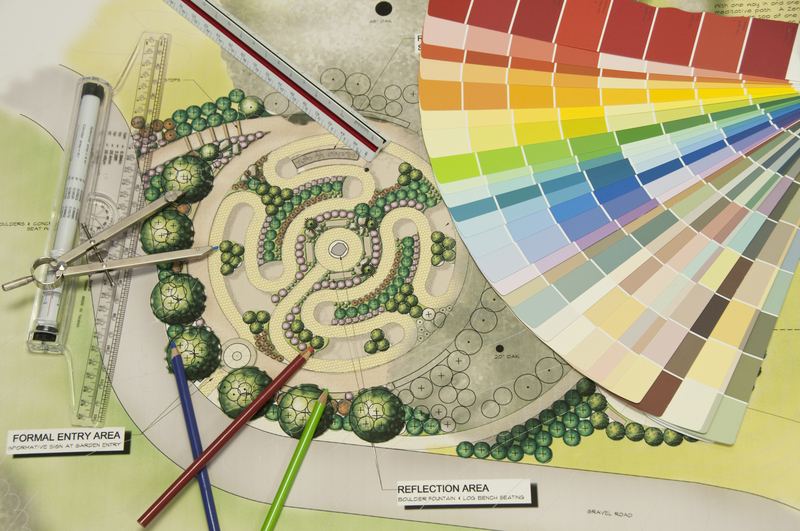Revitalize Your Space with Container Gardening
Posted on 29/08/2025
Revitalize Your Space with Container Gardening
Are you looking for a creative way to enhance your living environment? Whether you're in a cozy apartment or a spacious house, container gardening offers a flexible, rewarding approach to adding greenery and vibrancy to any setting. This comprehensive guide will explore the ins and outs of container gardening, offering expert tips and inspiration for transforming your space.

What is Container Gardening?
Container gardening is the practice of growing plants in containers such as pots, boxes, or other vessels, instead of planting them directly in the ground. This method is especially popular among urban dwellers, renters, or anyone with limited outdoor space. From balconies and patios to windowsills and rooftops, container gardens can flourish almost anywhere, breathing new life into your home or office.
The Many Benefits of Container Gardening
- Flexibility - Arrange your containers wherever you want, then move them as needed.
- Control - Easily monitor soil quality, watering, and sunlight exposure for each plant.
- Space efficiency - Ideal for those with restricted outdoor areas or no garden at all.
- Low maintenance - Weeding, pest control, and general upkeep are all simpler with pots.
- Creative expression - Mix and match different plants, colors, and containers to suit your style.
Imagine a balcony bursting with flowers, a patio filled with fragrant herbs, or a sunny kitchen windowsill graced with vibrant succulents. With container gardening solutions, all of this and more is within your reach.
Getting Started with Container Gardening
Choosing the Right Containers
Your container selection is foundational. Healthy root systems rely on properly sized pots and adequate drainage.
- Material: Clay, ceramic, metal, plastic, and wood containers each offer distinct advantages. Terracotta, for instance, is breathable but can dry out quickly, while plastic retains moisture well.
- Size: Choose a pot slightly larger than the plant's root ball. Bigger containers reduce watering frequency and allow roots to develop fully.
- Drainage: Ensure each pot has enough holes to prevent waterlogging and root rot.
- Style: Don't forget - containers reflect your personality! Opt for bold colors, elegant designs, or upcycled finds.
Best Soil Mix for Container Gardening
Unlike garden beds, container gardens rely on well-aerated, nutrient-rich soil mixes. Avoid using plain garden soil, which can compact and drain poorly in pots.
- Potting mix is lightweight and contains peat moss, perlite, or vermiculite for aeration.
- Add compost or slow-release fertilizer to give your plants a nutritional boost.
- For specialty plants like succulents or orchids, select a mix formulated for their unique needs.
Selecting the Perfect Plants
Container gardening ideas are only limited by your imagination! Choose plants according to your climate, sunlight availability, and the size of your containers. Here are some tried-and-true favorites:
- Herbs: Basil, mint, rosemary, and thyme thrive in containers and are handy for cooking.
- Flowers: Petunias, geraniums, marigolds, and pansies add vibrant color and charm.
- Vegetables: Tomatoes, peppers, radishes, lettuce, and spinach grow well in pots.
- Foliage plants: Hostas, ferns, coleus, and ivy offer striking textures and shades.
- Succulents and cacti: Perfect for low-maintenance, drought-tolerant arrangements.
Arranging Your Container Garden
Want a designer look? Use the "thriller, filler, spiller" concept:
- Thriller: A central, eye-catching plant that provides height and drama.
- Filler: Bushy, mid-sized plants to surround and complement the focal point.
- Spiller: Trailing varieties that tumble over the container's edge for a lush, cascading effect.
Container Gardening Tips and Best Practices
Location, Light, and Placement
Observe your space at different times of day. How much sunlight do your containers receive? Match your plants' needs to their environment:
- Full Sun: 6+ hours daily. Ideal for tomatoes, peppers, geraniums, and herbs.
- Partial Shade: 3-6 hours. Good for lettuce, spinach, impatiens, and ferns.
- Full Shade: Less than 3 hours. Hostas, begonias, and certain ferns will thrive.
Group pots with similar watering and lighting needs together. This promotes healthy growth and simplifies care routines.
Watering and Feeding Your Plants
Proper hydration is critical in container gardens, as pots dry out faster than traditional beds.
- Water early in the day to allow leaves to dry and discourage disease.
- Feel the soil's moisture level with your finger; if the top inch is dry, it's time to water.
- Use self-watering containers or drip irrigation for convenience and efficiency.
Feed your plants every few weeks with liquid fertilizer or use slow-release granules mixed into the soil at planting time.
Dealing with Pests and Diseases
While potted plants are generally less susceptible to soil-borne disease, it's essential to maintain vigilance:
- Regularly inspect leaves and stems for pests like aphids or spider mites.
- Treat outbreaks promptly with neem oil, insecticidal soap, or remove affected areas by hand.
- Keep pots clean and sterile, especially when reusing containers season after season.
Inspiring Container Gardening Ideas for Every Space
For Small Balconies and Patios
- Vertical gardens: Use tiered stands, wall planters, or hanging baskets to maximize space.
- Theme planting: Create a "pizza garden" with tomatoes, basil, and oregano in a single pot.
- Miniature edible gardens: Compact lettuce, radishes, and herbs fit even the tiniest spots.
For Indoors and Windowsills
- Succulent arrangements: Low maintenance and visually striking in decorative bowls or trays.
- Herb jars: Mason jars or recycled containers are perfect for parsley, chives, and mint.
- Flowering houseplants: African violets and mini orchids bring year-round color indoors.
For Outdoor Yards and Terraces
- Statement planters: Large ornamental containers hold small trees or dramatic blooms.
- Troughs and raised boxes: Excellent for root vegetables and sprawling vines.
- Mixed arrangements: Pair annuals, perennials, and herbs for dynamic, season-long interest.
Upcycling and Sustainable Container Gardening
- Transform old buckets, crates, or tires into eco-friendly planter beds.
- Use biodegradable pots made from coir, peat, or recycled materials.
- Harvest rainwater and compost food scraps to nurture your container creations sustainably.
Seasonal Care and Refreshing Your Container Garden
Container gardening maintenance is easy with a little seasonal planning:
- Spring: Re-energize your pots by replacing soil, fertilizing, and planting new seedlings.
- Summer: Watch for heat stress and water more frequently as temperatures rise.
- Autumn: Swap in cool-weather edibles (like kale) or decorative cabbages for fall flair.
- Winter: Bring tender plants indoors or use insulated covers for frost protection.
Frequently Asked Questions about Container Gardening
Can I grow vegetables and fruits in containers?
Absolutely! Many popular edibles--tomatoes, peppers, strawberries, lettuce, and dwarf citrus--do well in pots. Choose containers with adequate depth for root systems, and ensure ample sunlight and nutrition for your crops.
How often should I water my container plants?
Frequency depends on the plant species, container size, temperature, and location. In general, check soil moisture daily during warm periods and adjust as needed. Remember--overwatering can be just as harmful as underwatering.
What are the best plants for beginners?
- Herbs like basil, mint, and chives
- Marigolds and petunias for color
- Tomatoes and salad greens for edibles
- Low-maintenance succulents
How do I prevent container plants from becoming root bound?
Periodically check for roots circling the container or growing out of drainage holes. Repot into larger vessels as needed to support continued growth.

Container Gardening for Urban Dwellers and Apartment Owners
Living in the city doesn't mean giving up your dreams of lush, tranquil greenery. Container gardening for small spaces is trending as more people recognize the value of growing their own herbs, food, and flowers--even just outside a window.
- Privacy: Tall plants or trellised vines create green screens and cozy nooks.
- Improved air quality: Houseplants and outdoor containers filter pollutants and boost oxygen.
- Mental health benefits: Time spent nurturing plants reduces stress and increases happiness.
Start small, experiment, and soon your home--or workspace--will brim with leafy life and color.
Conclusion: Refresh Your Home with Beautiful Container Gardens
Container gardening is a versatile, enjoyable way to revitalize your space--indoors or outdoors, large or small. With a little planning and care, anyone can create lush, living displays that brighten their home, provide fresh herbs or produce, and offer a daily connection to nature. Explore countless container gardening ideas--from flower-filled planters to thriving urban jungle arrangements--and discover how transforming your living space is only a pot and a plant away!
Ready to start your own container garden? Gather your favorite pots, pick out a few plants, and let the journey to a greener lifestyle begin. Happy gardening!

